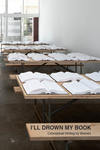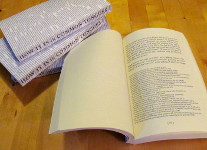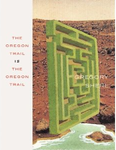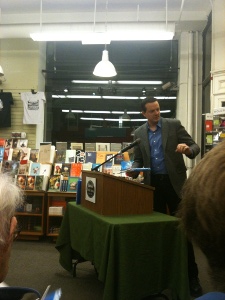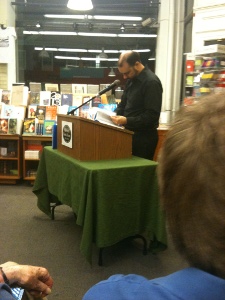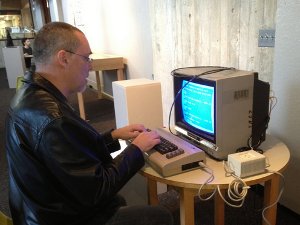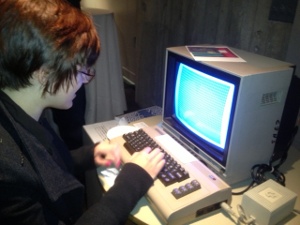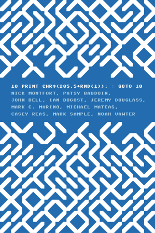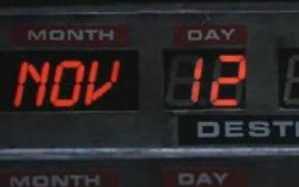Cutting Time with a Knife
Michael Leong
Black Square Editions · 124 pages
When randomness is employed in poetics and succeeds, it is because of how it plays within regularity of different sorts. This book sutures the two very well. Concrete elemental sqaures sit at the top of each page, containing irregularly arranged phrases of regular syntax (“The [buttock] of the poet is the [geodesic dome] of [Rhodium].”) The text and sometimes symbols underneath read like a Google Books snippet view. Leong constructed this book “by etherizing T.S. Eliot’s classic essay,” “Tradition and the Individual Talent,” upon the periodic table. The cyborg text, animated with galvanic force, is made from cut-ups of this essay and the Wikipedia articles for the 118 elements. The periodic table has offered a rich lattice for poetic production, digital and otherwise; here, the unique twist was provided by the amalgamation of this tabular framework with an (ostensibly random) avant-garde writing technique, a classic essay on how individuality relates to commonality and a collaboratively-authored encyclopedia.


